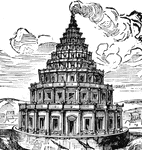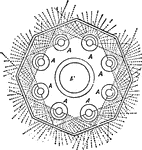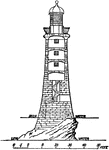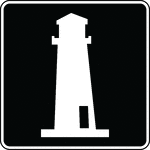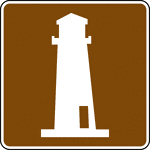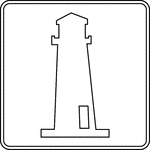Lighthouses
The Lighthouses ClipArt gallery offers 38 views of lighthouses along with the instruments and lenses they contain.
Beacon
"Beacons in exposed situations are constructed sometimes of stone, and cement-concrete or cement-rubble,…
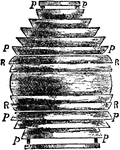
Dioptric Light
"First Application of Total Reflexion to Fixed Lights. In this apparatus Fresnel substituted his totally…

Floating Lights
"aa is the mast, b tackle hook, c, c brass flanges for fixing parts of lantern together, e and g weather…

Fort Jefferson
An illustration of Fort Jefferson which is located today in what is Dry Tortugas National Park. Dry…
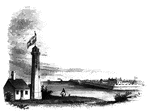
Fort Niagra
Distant view of Fort Niagra. This view is from the west side of the Niagra River, near the light-house.…
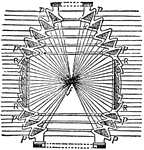
Fresnels Revolving Light
"Fresnel's Revolving Light. —In this form of revolving light the central burner is surrounded by annular…

Fresnels Revolving Light
"Fresnel's Revolving Light. —In this form of revolving light the central burner is surrounded by annular…

Fresnels Revolving Light
"Fresnel's Revolving Light. —In this form of revolving light the central burner is surrounded by annular…
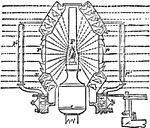
Fresnels Revolving Light
"Fresnel's Revolving Light. —In this form of revolving light the central burner is surrounded by annular…
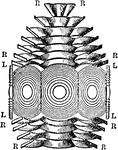
Holophotal Catadioptric
"Holophotal Catadioptric Apparatus Revolving round a Central Flame.—If in place of Fresnel's compound…

Holophotal Light
"Holophotal Fixed Light varied by Flashes.—Fresnel's double agents are here also dispensed with by…

Tybee Island
"Tybee Island, Savannah River, Ga.- Views of the lighthouse and barracks- destruction of the lighthouse…

Lighthouse
An elevated structure or tower placed near a seaport or some headland for the purpose of protecting…

Lighthouse
"An iron pile light erected at Haneda, in the Bay of Yedo, Japan." —The Encyclopedia Britannica,…

Lighthouse
"A tower or other elevated structure bearing a light at the top and erected at the entrance of a harbor…

Lighthouse
Tangrams, invented by the Chinese, are used to develop geometric thinking and spatial sense. Seven figures…

Lighthouse
Tangrams, invented by the Chinese, are used to develop geometric thinking and spatial sense. Seven figures…
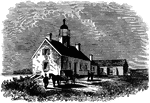
Lighthouse on Horse Island
The Sackett's Harbor lighthouse was erected on Horse Island during the War of 1812.
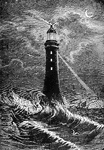
Eddystone Lighthouse
"Eddystone is a group of gneiss rocks, daily submerged by the tide, in the English Channel, 9 miles…
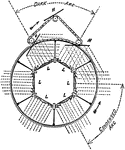
Repeating Light
"Plane mirrors M revolve on an endless chain placed outside of the apparatus and alter the direction…

Revolving Light
"In order to produce, on the catoptric system, a fixed light showing all round the circle, a number…

Revolving Light
"If again the light was to revolve, then a revolving chandelier was employed having a certain number…
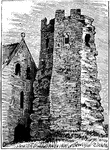
Roman Lighthouse, and Part of St. Mary's Church, Dover
The lighthouse on the Eastern Heights still stands in the grounds of Dover Castle to 80 foot (24 m)…

Seahorse Key
An illustration of Seahorse Key lighthouse which is located in Cedar Keys, a cluster of islands close…

Stevensons Revolving Light
"In 1835 Mr. Stevenson, in a report to the Northern Lighthouse Board, proposed to add fixed reflecting…
